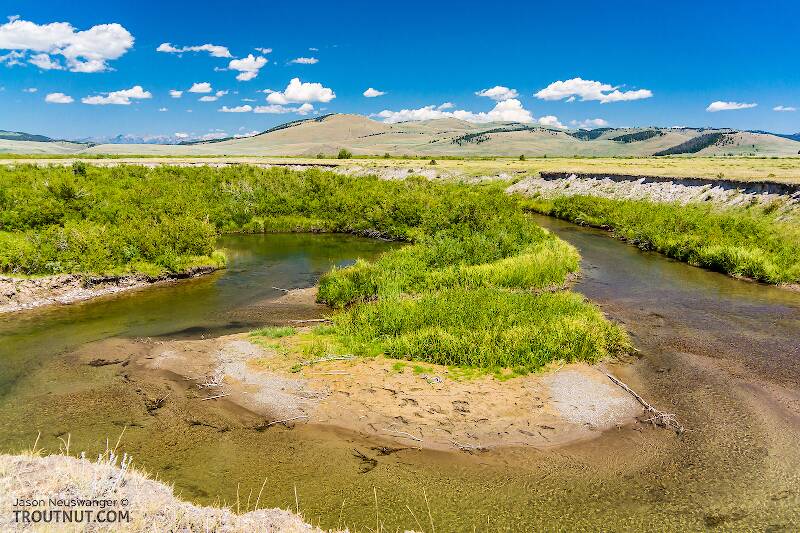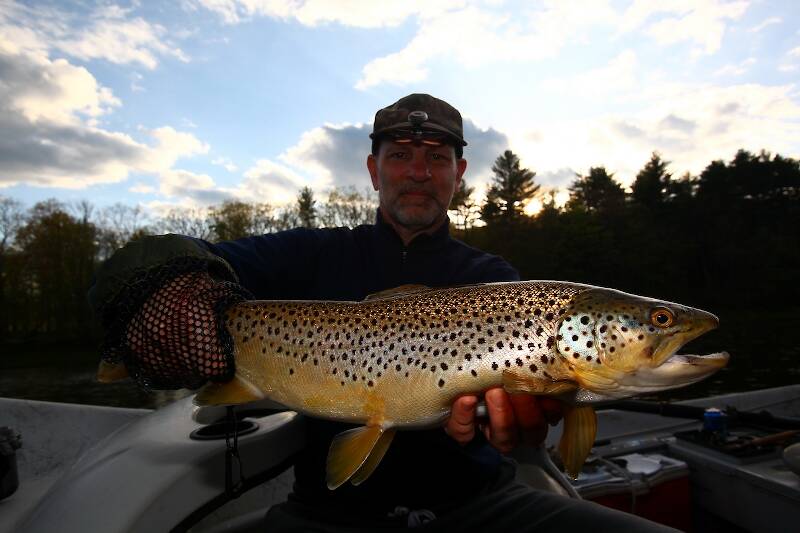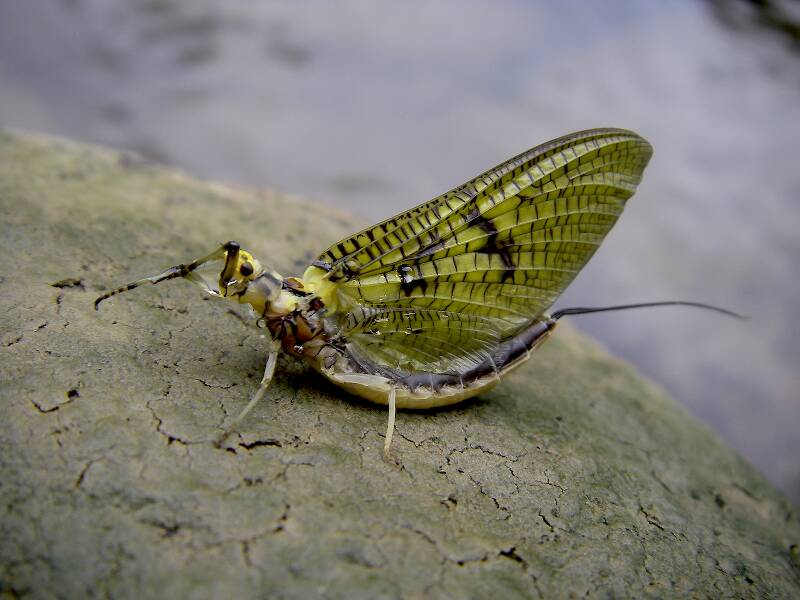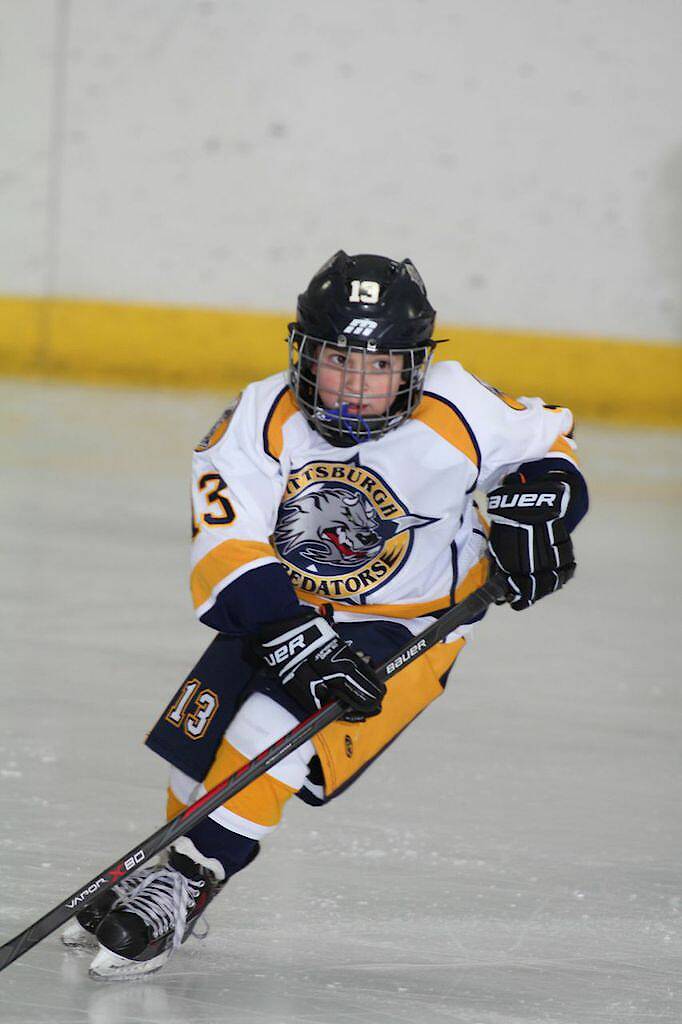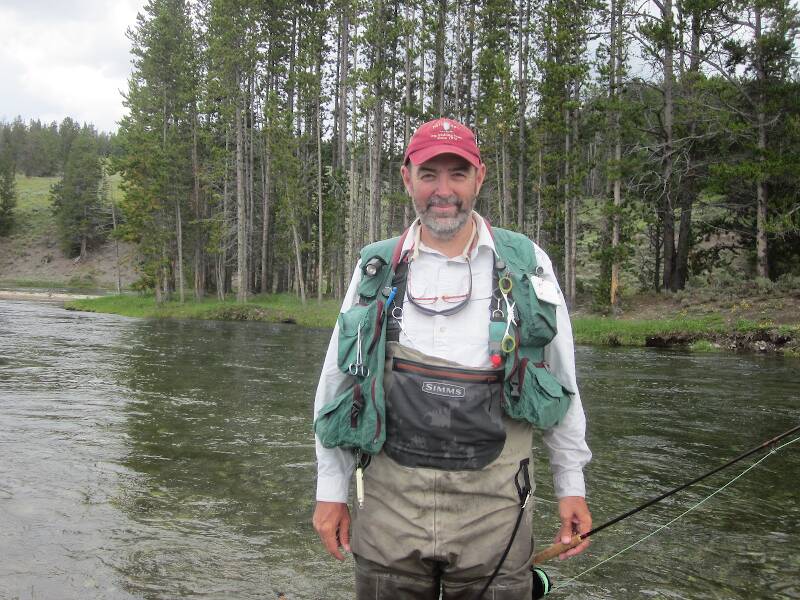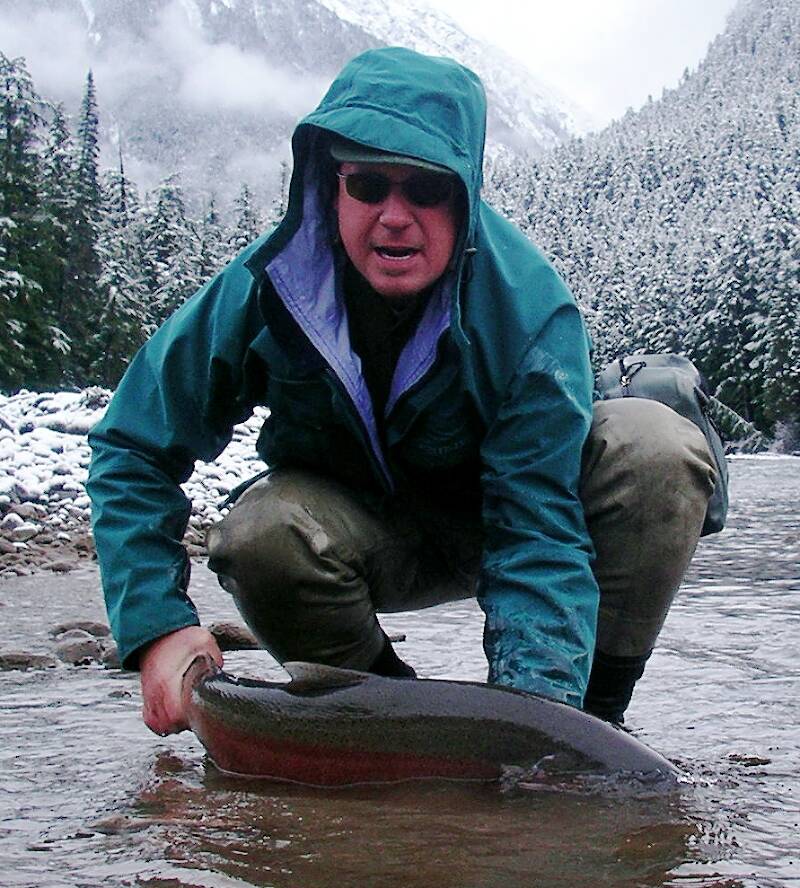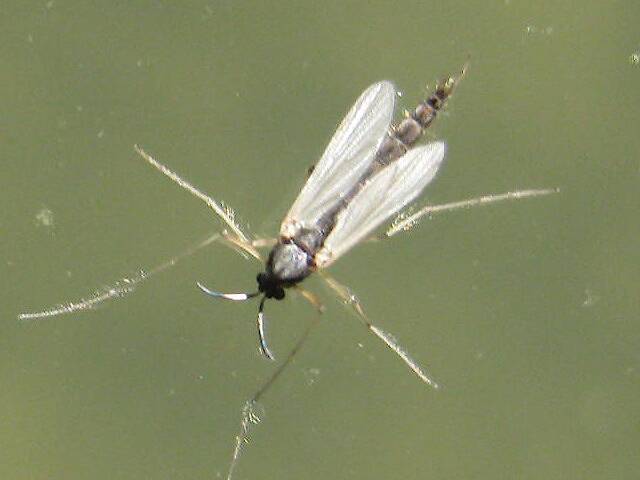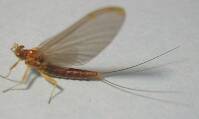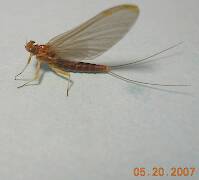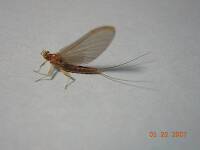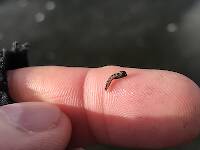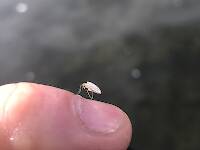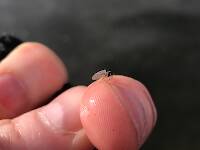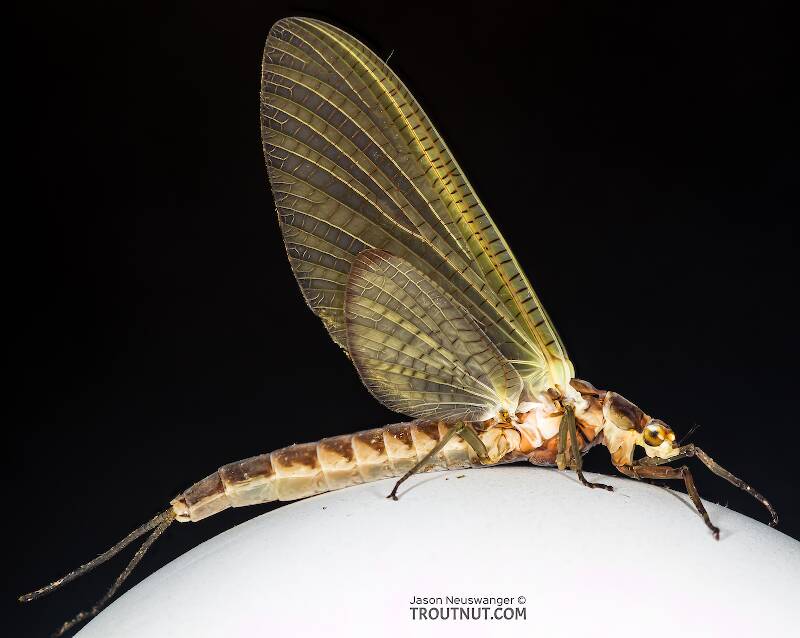
Hex Mayflies
Hexagenia limbata
The famous nocturnal Hex hatch of the Midwest (and a few other lucky locations) stirs to the surface mythically large brown trout that only touch streamers for the rest of the year.
Featured on the forum
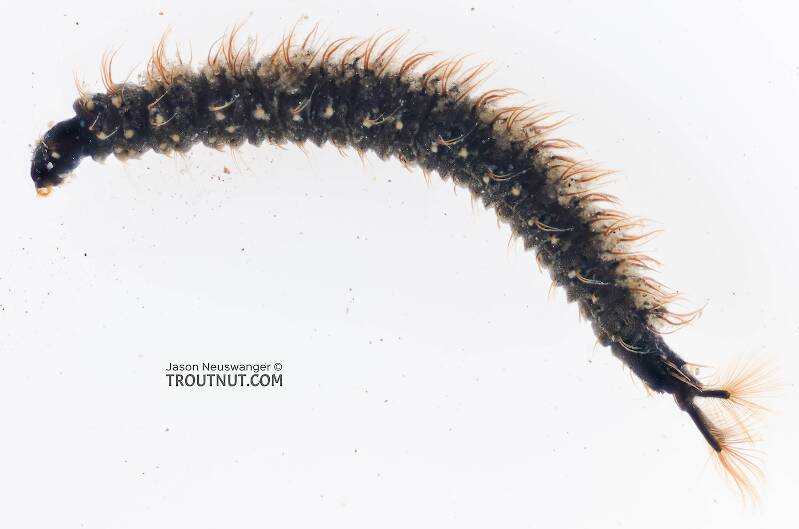
This wild-looking little thing completely puzzled me. At first I was thinking beetle or month larva, until I got a look at the pictures on the computer screen. I made a couple of incorrect guesses before entomologist Greg Courtney pointed me in the right direction with Psychodidae. He suggested a possible genus of Thornburghiella, but could not rule out some other members of the tribe Pericomini.

Troutnut is a project started in 2003 by salmonid ecologist Jason "Troutnut" Neuswanger to help anglers and
fly tyers unabashedly embrace the entomological side of the sport. Learn more about Troutnut or
support the project for an enhanced experience here.
Martinlf on Mar 26, 2013March 26th, 2013, 10:38 am EDT
Does anyone have a good QG wet fly pattern that they would be willing to share?
"He spread them a yard and a half. 'And every one that got away is this big.'"
--Fred Chappell
--Fred Chappell
Crepuscular on Mar 26, 2013March 26th, 2013, 11:32 am EDT
yes
Gutcutter on Mar 26, 2013March 26th, 2013, 11:52 am EDT
No
All men who fish may in turn be divided into two parts: those who fish for trout and those who don't. Trout fishermen are a race apart: they are a dedicated crew- indolent, improvident, and quietly mad.
-Robert Traver, Trout Madness
-Robert Traver, Trout Madness
Martinlf on Mar 26, 2013March 26th, 2013, 12:59 pm EDT
Thanks
"He spread them a yard and a half. 'And every one that got away is this big.'"
--Fred Chappell
--Fred Chappell
Oldredbarn on Mar 26, 2013March 26th, 2013, 2:08 pm EDT
Wow! You guys are tough! :)
"Even when my best efforts fail it's a satisfying challenge, and that, after all, is the essence of fly fishing." -Chauncy Lively
"Envy not the man who lives beside the river, but the man the river flows through." Joseph T Heywood
"Envy not the man who lives beside the river, but the man the river flows through." Joseph T Heywood
Entoman on Mar 26, 2013March 26th, 2013, 2:22 pm EDT
:)LOL Yes, I was wondering why Louis thanked our overly verbose buddies.
"It's not that I find fishing so important, it's just that I find all other endeavors of Man equally unimportant... And not nearly as much fun!" Robert Traver, Anatomy of a Fisherman
Lastchance on Mar 26, 2013March 26th, 2013, 2:41 pm EDT
Maybe?
I didn't see a "maybe."
I didn't see a "maybe."
Falsifly on Mar 26, 2013March 26th, 2013, 4:44 pm EDT
Some strange goings on here. Kurt are you playing games?
Falsifly
When asked what I just caught that monster on I showed him. He put on his magnifiers and said, "I can't believe they can see that."
When asked what I just caught that monster on I showed him. He put on his magnifiers and said, "I can't believe they can see that."
Entoman on Mar 26, 2013March 26th, 2013, 4:47 pm EDT
Who, me? ;)
"It's not that I find fishing so important, it's just that I find all other endeavors of Man equally unimportant... And not nearly as much fun!" Robert Traver, Anatomy of a Fisherman
Entoman on Mar 27, 2013March 27th, 2013, 1:58 pm EDT
Does anyone have a good QG wet fly pattern that they would be willing to share?
A serious comment to address your thread, Louis --
Out here, we have the equivalent to pleuralis (Quill Gordon) and vitreus (Little Marryatt) with our longimanus (Yellow Quill) and albertae (Pink Lady). From all the photos I've seen they look pretty much the same, though the Quill Gordons can be darker. The other difference is ours hatch much later when a lot is going on so they never achieved the tradition of importance yours have. That and being the alleged model for the first dry fly in this country has probably raised its significance to perhaps greater heights than it deserves?
IMO, you can't beat the Flymph or Bird's Nest in the appropriate shade. These are pretty much the only emergers I use for heptaginiids. Whether these comments apply back East is for others to comment on, but the Flymph is PA in origin, so I would think so. Just to throw something different at the fish they may not have seen in this situation, try an unweighted Bird's Nest in the margins and see what happens!
"It's not that I find fishing so important, it's just that I find all other endeavors of Man equally unimportant... And not nearly as much fun!" Robert Traver, Anatomy of a Fisherman
Martinlf on Mar 27, 2013March 27th, 2013, 3:39 pm EDT
Thanks, Kurt. I'm sort of looking for a pattern that differs from the classic QG wet, which uses a wood duck wing, since QG's have a dun wing without the markings seen in other bugs that hatch later. I think I have a good idea, and Eric is going to share one of his patterns with me at some point, so I'm good. Though Tony is bad, very bad.
"He spread them a yard and a half. 'And every one that got away is this big.'"
--Fred Chappell
--Fred Chappell
Entoman on Mar 27, 2013March 27th, 2013, 4:59 pm EDT
It would be really cool to actually see photos of their emergence. My gut tells me they look very similar to diving baetids with their wings collapsed around their bodies more along the sides than over their backs (as you see in art renderings). The real question is how filled are their wings during this process. Some think they are still largely folded up until they hit the atmosphere. They seem to appear fully formed at the surface awfully quickly for that. The answer to this will greatly impact our tying.
"It's not that I find fishing so important, it's just that I find all other endeavors of Man equally unimportant... And not nearly as much fun!" Robert Traver, Anatomy of a Fisherman
Sayfu
Posts: 560
Posts: 560
Sayfu on Mar 28, 2013March 28th, 2013, 5:18 am EDT
For the incredible success I had fishing the Yellow Quills as they also are called in the West...Epeorus Albertae, I incorporated the halo wing in my soft hackle emerger..(the gray, shiny, EP fibers) realizing they hatch out subsurface...Tails, cream body, halo winging, and the light colored feather from a Partridge behind a metal bead head. The winging could have been a trigger.
Quick Reply
Related Discussions
Topic
Replies
Last Reply
11
Aug 29, 2011
by Entoman
by Entoman

